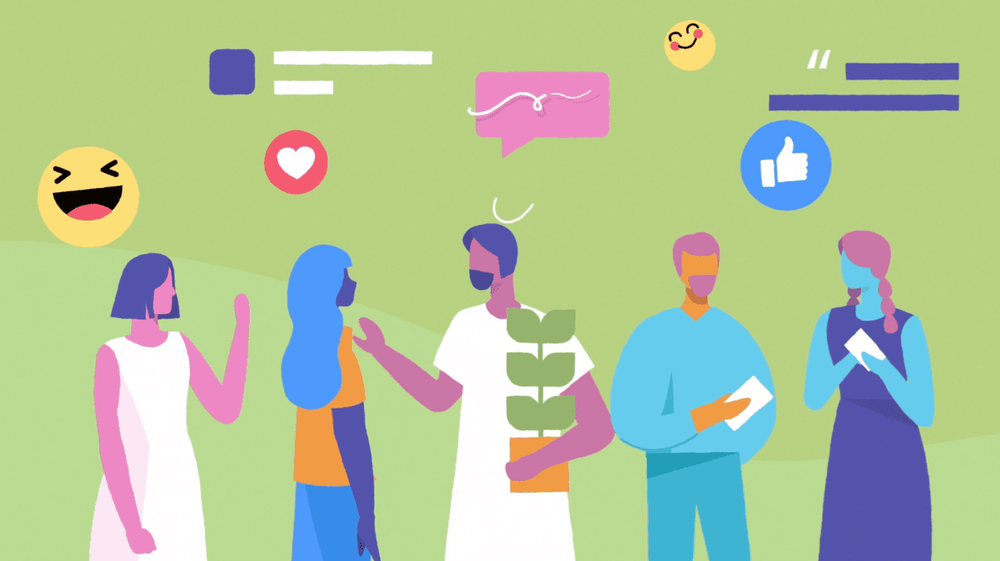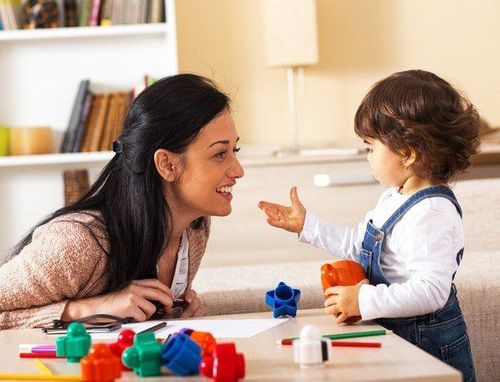This is an automatically translated article.
Scientists have studied thought processes in brain regions involved in creativity. Research shows that the signs of creative and non-creative people relate to the complex interplay between spontaneous and controlled thinking. The following article will help you understand why some people are creative, others are not, and some ways to improve it.
1. Science studies the signs of creative people and non-creative people
Researchers have found that people who generate more creative ideas or creative people often use different parts of their brains than the rest of us. While most people activate what are known as “spontaneous thinking networks” or “controlled thinking networks,” but not both at the same time, creative people activate both networks simultaneously.
Roger Beaty, Postdoctoral Fellow in Cognitive Neuroscience at Harvard University, organized a study in which 163 participants completed a classic test of “divergent thinking.” called Alternate User Tasks.
The task involves asking people to come up with new and unusual uses for common objects. For example, an image of a sock might display on a screen, and one participant might write “use it to warm your feet” while another participant write “use as a water purification system.” ". Participants underwent fMRI scans (brain scans that measure blood flow to different parts of the brain) that measure functional connectivity between all brain regions – activity levels in one region correlate with activity. movement in other regions.
The researchers ranked the ideas by rank for originality: Common uses received lower scores (using socks to warm feet), while uses were less common. variable received a higher score (using socks as a water filtration system).
They then compared each person's creativity score with all possible brain connections (about 35,000) and removed the connections that, according to our analysis, did not correlate with creativity scores. The remaining connections form a “highly creative” network, a set of connections that are highly involved in generating original ideas.
After identifying the network, the researchers will determine if someone with a stronger connection in this highly innovative network will score well on the tasks.
And they found that participants who came up with better ideas activated certain brain networks while less creative participants did not. In fact, the effect was so predictable that they were able to reverse the study and yield the same result: “We were able to estimate how innovative a person's idea would be,” says Beaty. based on the strength of their connections in this network,”
So what are those networks? And why are some people more creative than others?
The brain regions in the “highly creative” network belong to three specific brain systems: the default network, the resilience network, and the executive network.
The default network is a set of brain regions that are activated when people engage in spontaneous thinking, such as wandering, daydreaming, and fantasizing. This network can play an important role in brainstorming ideas - brainstorming several possible solutions to a problem.
The executive control network is a collection of regions that activate when people need to focus or control their thought processes. This network can play an important role in evaluating ideas or determining if the ideas that are brainstormed really work and modifying them to fit creative goals.
The salience network is a collection of areas that act as a switching mechanism between the default and the operating network. This network can play an important role in alternating between idea generation and idea evaluation.
An interesting feature of these three networks is that they are often not activated at the same time. For example, when the operator network is enabled, the default network is usually disabled. The results showed that creative people who were able to co-activate brain networks often performed better individually.
However, more in-depth studies are still needed to confirm this.

Người sáng tạo có khả năng sử dụng mạng lưới não bộ thường hoạt động riêng lẻ tốt hơn
2. 5 reasons why some people are creative and others are not
They consciously develop their creativity. Staying creative is like developing another skill. There are practical things we can do to become more creative. More creative people spend more time honing a particular skill and reaching higher levels of competence. They think differently when they want to be creative. People who seem more creative are more willing to think in different ways. They are not afraid to try new things or take new risks. Just being in a creative environment prompts them to do things differently. They spend time on their creativity. Creativity is not always tied to a goal, project or task. Sometimes creativity just feels like a hobby. Creative people spend their time doing things because it brings them joy. Therefore, creative people do things that allow them to express who they are. They are constantly learning and applying. The learning process involves entertaining a new idea, acting on that idea, and experiencing a new outcome. The feedback received from achieving new results is a learning experience. Creative people are more likely to achieve a new level of awareness because they are more willing to apply what they are learning. They can imagine the outcome they want. It's no wonder that creative people always think about the end result and work against it. To become more creative, we need to identify what we want to be creative with and take the time to do it. The more time we spend on it, the more productive we will be and soon we will consider ourselves creative in it.
3. Ways to improve creative thinking
3.1 Establish a sense of creativity Explore vehicles outside your comfort zone. Creative minds are always open to change. If you only use a certain type of media or entertainment, you are limiting yourself. You will not be exposed to new things and ideas, which can lead to a lack of original and creative thinking.Read books, articles and blogs outside of your industry to gain new insights. Most people have a certain type of entertainment that they turn to. Make an effort to push yourself to new forms of entertainment.
Create something small every day Creativity is like any other skill. You will get better with regular practice. If you want to boost your ability to think creatively, start creating something small every day.
You don't necessarily create with a limit in mind. In fact, this can inhibit creative thinking. Instead of focusing on one overarching project, simply schedule some time each day to let your creativity run wild.
You can doodling, sketching, light painting, freehand writing or write down some poetry that motivates the moment.
Take time to be creative. Just like you make time to brush your teeth every night, try to schedule time for creative pursuits each day. For example, you could plan to write 20 minutes of free time each day before you go to bed.
Walk Studies show that walking actually improves creative thinking. Many people feel that they have their best thoughts while walking. Try to schedule a 20 to 30 minute walk every day. This can lead to greater creativity.
It doesn't matter where you walk. Studies show that you can walk inside or outside and still peak in creative thinking patterns. If it's a rainy day, you can take a walk through the hallways at work to encourage creative thinking.
Walking can also help reduce anxiety. If your mind is less cluttered with anxious thoughts, you may have more room to be creative.

Đi bộ giúp mọi người sáng tạo và cải thiện suy nghĩ
Figure out your creative hours Many people feel more energetic or creative at certain times of the day. By paying attention to your thought patterns and energy levels throughout the day to find your rush hour.
Pay attention to both thoughts and feelings. Many people feel more creative when they feel emotionally connected. If you tend to be sentimental in the evening hours, you may be more creative at this time.
Keep a diary Writing a journal regularly can be a great way to boost creative thinking. Writing down your thoughts on a daily basis can help you become more introspective but also increase your visibility, both of which can promote creative thinking.
You can also bring a diary. This can allow you to write down thoughts as they come and can encourage you to be more observant. You'll end up looking for inspiration everywhere if you always have a notebook to jot down your most interesting thoughts and insights as they come.
3.2 Change your thinking Give up judgment Judgment can inhibit creative thinking. When solving problems, allow your brain to come up with new, somewhat crazy ideas. Avoid judging these ideas as "fantastic" or "absurd."
Be open to alternative ideas. Don't judge ideas that are out of the ordinary. Even if you don't exactly follow all the unconventional ideas, simply exposing yourself to the unusual can help support creative thinking.
Be open to new things Creative thoughts can come from many places. If you're open to changes in your routine, you're more likely to stumble across inspiration. Instead of feeling anxious about discovering new ideas or experiences, see them as exciting opportunities to boost your creativity.
Talk to someone new. Hearing other people's stories or experiences can increase your ability to think creatively. You will be introduced to a new, exciting perspective. Start a conversation with a stranger at a bar or volunteer to talk to a new client at work.
Taking risks Taking risks is important for developing creative thinking. If you're dealing with new, somewhat intimidating experiences on a regular basis, you'll have to exercise some creative thinking to find unconventional solutions to new problems and failures. Regularly taking risks can make you more resourceful and creative overall. Every day, try to seize an opportunity. Apply for a scholarship even if you feel unqualified. Take on a new project at work, even if it feels a bit daunting. People who take risks tend to have higher levels of creative thinking. A risk exposes you to a whole new situation, forcing you to adjust your thinking to adjust. Taking risks also encourages disobedience. Creative thinkers act independently, more intuitively than others.
3.3 Seek help Socializing regularly Being around a variety of people can promote creative thinking. By being around people with different perspectives and backgrounds, you'll find yourself thinking more creatively. Creative thinkers generally have a big, open-minded outlook. Regular socialization can also reduce stress levels. If you want to think creatively, you need to rest and de-stress. Having a social circle that you hang out with on a regular basis can help here

Những người sáng tạo thường xuyên giao lưu giúp giảm căng thẳng
Reach out to like-minded people Trying to connect with other creators can make you more creative on your own. Try to connect with people with similar interests to promote creative thinking.
With that said, finding media outside of your comfort zone can boost creativity.
Join a guild There are many groups you can join that help you network with others in a creative field. These can provide you with invaluable experiences to connect with and learn from those around you.
Ask for feedback If you're stuck on a project, ask another creator for help. This could be a friend, colleague or relative. Asking others for feedback can help you see your work from an outside perspective, providing an opportunity for you to improve.
Please dial HOTLINE for more information or register for an appointment HERE. Download MyVinmec app to make appointments faster and to manage your bookings easily.
References: neelraman.com, opencolleges.edu.au, neurosciencenews.com












